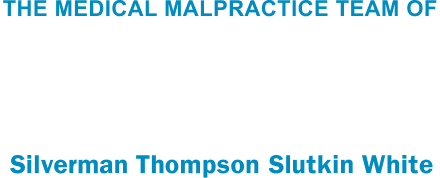Wrongful Death
When someone dies as a result of a preventable injury, such as an automobile accident or as the result of medical malpractice, that person’s family’s lawyer will, in most circumstances, typically bring two distinct claims. The first is an action brought by the personal representative of the decedent’s estate, claiming monetary damages for the actual injuries experienced by the decedent. This is called a “survival action.” Pursuant to statutory law in Maryland, a survival action entitles a decedent’s estate to, if merited, recover compensation for the conscious pain and suffering, other damages and expenses incurred by the decedent that he/she experienced up to the time of his/her death. The second type of claim is called a “wrongful death action.” This claim is also statutory–based, but is brought by the relatives of the victim, seeking compensation for the decedent’s death. These individuals are referred to as the wrongful death beneficiaries. In Maryland, permissible wrongful death beneficiaries include the wife, husband, parents and child of the deceased. See Maryland Cts. & Jud. Proc Art., Annot. Code, Sect. 3–904 (2005).
When a family loses a loved one in a tragic accident or as the result of medical negligence, we are often asked what is the maximum recovery that Maryland allows them to receive for this loss? The answer involves several important factors, but ultimately is explicitly prescribed by Maryland law. For starters, in every wrongful death lawsuit, one of the biggest factors is whether the defendant has sufficient insurance coverage and whether there are any issues collecting a judgment against that defendant is one is obtained. Assuming there are no such problems, the next step in answering this question is to separate the possible damage recovery into the two broad categories that Maryland recognizes: economic and non–economic damages. The recovery of economic damages is relatively straight–forward regardless of whether the death was caused by non–medical malpractice negligence (auto accident) or by medical malpractice. Maryland permits a wrongful death plaintiff in either instance to recover those damages that can be readily quantified such as past medical expenses, future medical expenses, past lost wages or earning capacity, future lost wages or earning capacity and other out–of–pocket losses. In most cases, attorneys will rely upon the expertise of experts in the fields of life care planning or economics to assist in the determination of these costs. These costs are determined by an analysis fo the present value of these dollars and not upon speculation regarding inflation and other unknown economic factors. These computations also take into account the decedent’s estimated life expectancy and work–life expectancy. Non–economic damages (damages awarded for the actual conscious pain and suffering experienced by the decedent and the pain and suffering experienced by the wrongful death beneficiaries as a result of losing a loved one), on the other hand, are prescribed by Maryland statute in the following fashion.






